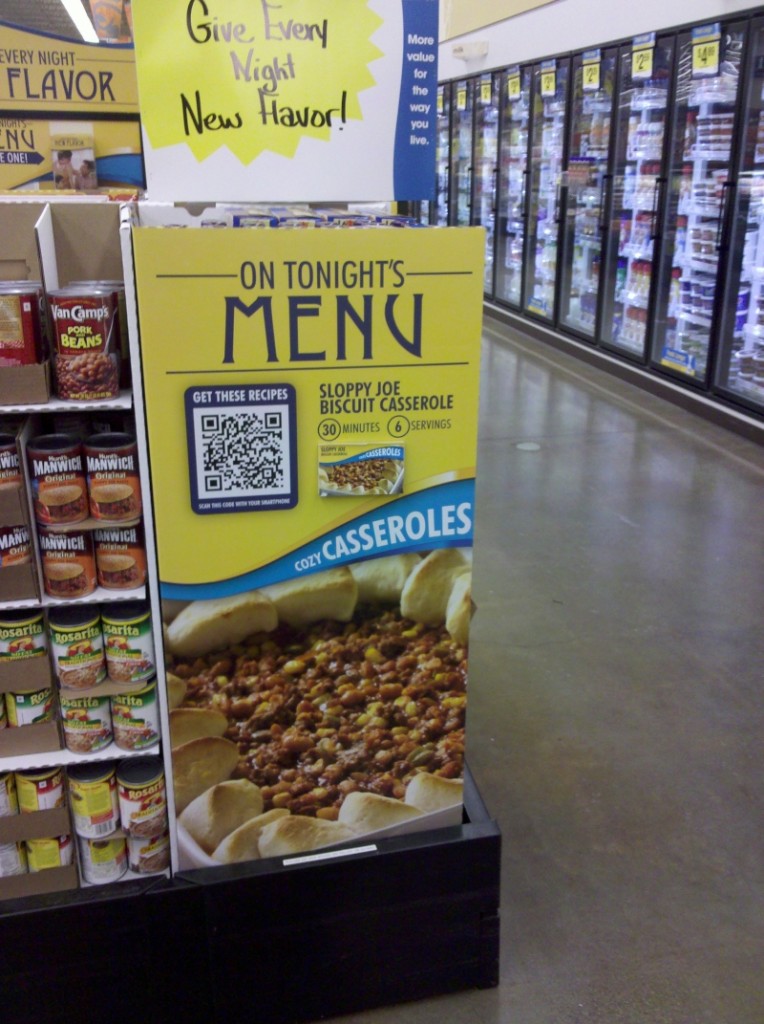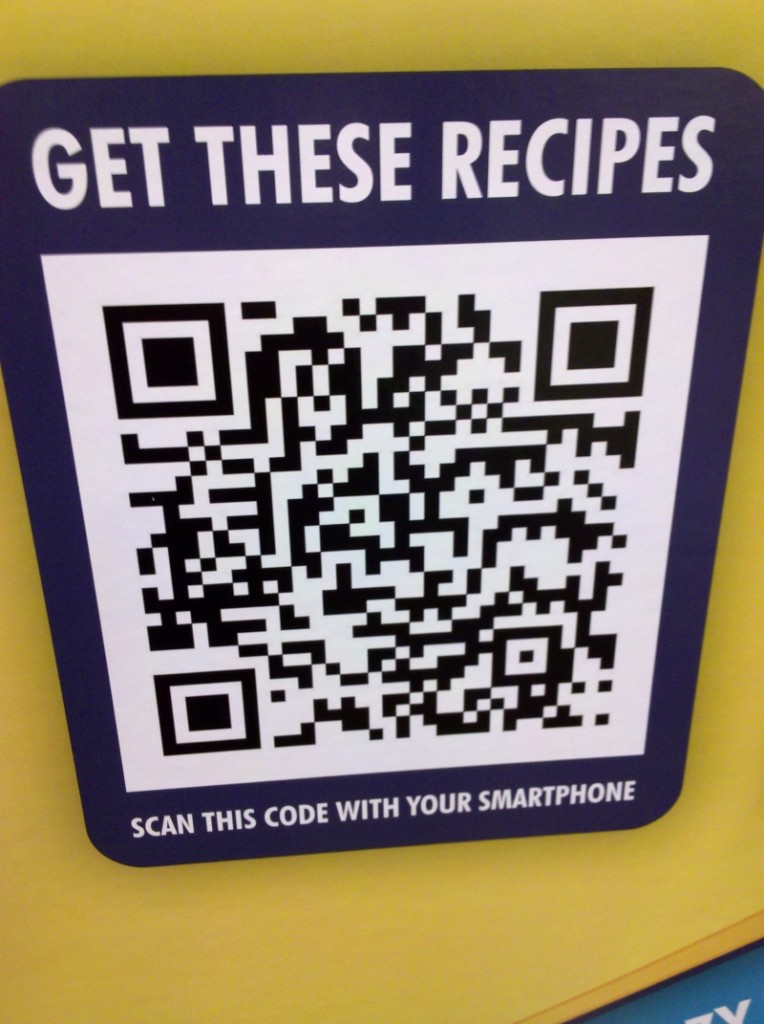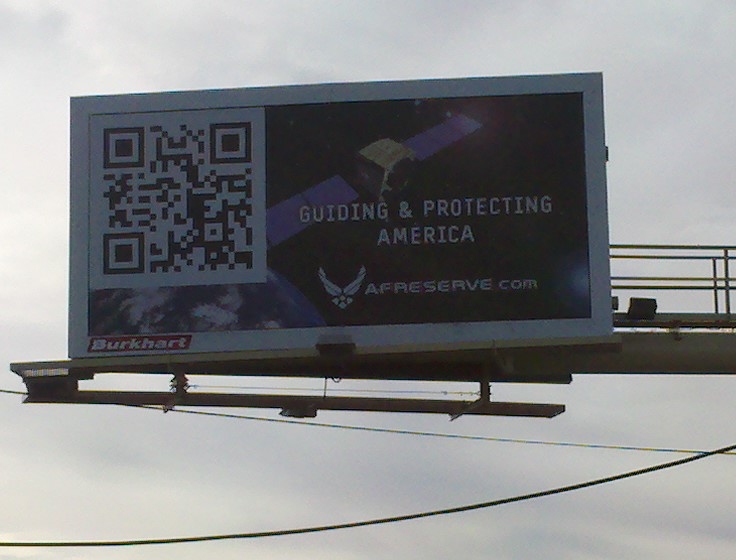
by Scott Howard | Jan 18, 2012 | ScLoHo's Web World
Last summer I created a name tag to wear at a social media event in Indianapolis.
It had my name, my Twitter handle, @ScLoHo, and a QR code that would take people to a special web page I created.
After a couple of hours a college student that I was talking to asked me if he could scan the QR code, which he did and he won a prize that I had with me to reward the first person to do so.
I was surprised that only one person out of about 75 even said anything considering this was a Social Media group and this was a QR code, the latest rage.
But there were a couple lessons I learned.
Despite my interest and understanding of QR codes, they were not “universal” yet.
And as I thought back to the basics of marketing, when introducing something new, you should tell people what to do with it.
If I had included words on my nametag that said: “Scan this QR Code for a Free Prize”, even those who had no idea what a QR code was, would be tempted to ask and then perhaps scan.
Saturday I made a run to the grocery store and near the milk was this display that caught my attention:

Of course I snapped a picture and then decided to scan the QR code:

You can scan this code right now, unless you are reading this on your phone, and you will discover that they did everything right.
The QR code goes to a mobile friendly website with recipes for using the product that they want me to buy.
They also told me what to do with the QR code.
What I don’t know is if they will follow through and connect all the dots with the data they collect once I visit their website via my phone while in their store.
But as far as getting me and others to participate in the QR code promotion, they did everything right.
Tomorrow, an example of a QR code promotion that does everything wrong.

by Scott Howard | Jan 17, 2012 | ScLoHo's Web World
Love them, hate them, don’t care about them, it doesn’t matter.
QR Codes are going to be around for awhile.
Saturday my friend and co-worker at Cirrus ABS, Kevin Mullett tweeted a link to a story on Mashable that shared 10 Creative Ways to Use QR Codes.
One of my favorites from the list was this one:
This past holiday season, retailer JCPenney allowed customers to add a personal touch to their gifts. When you purchased a gift from any JCPenney store, you received a “Santa Tag” with an accompanying QR code. By scanning the code, the giver could record a personalized voice message for the recipient. The the giver stuck the code on the package like a gift card.

Here’s the complete list:
1. Reinventing the Shopping Experience
2. Enhancing the User Experience
3. Streamlining the Customer’s Visit
4. Noting the Things You Enjoy
5. Give Customers Something They Want
6. Providing Real-Time Information
7. Initiate Share-worthy Competitions
8. Personalized Gift Giving
9. Help Your Customers Grow Their Businesses
10. Share Modern Day Mixtapes
Read the whole story for examples of each of these.
Tomorrow I’ll dig in depth my experience with a QR code at a supermarket, and then Thursday, one of the worst examples of QR code placement.

by Scott Howard | Nov 4, 2011 | ScLoHo's Web World
Following up from yesterday’s post on QR Codes, I have this piece from Mediapost:
5 Hassle-free QR Code Calls To Action by Paul Prisco
There’s nothing worse than developing a marketing campaign with a call to action that leads you nowhere. If you’re slapping QR Codes on your ads, collateral or direct mail with no clear next step, your results will be disappointing. Even worse, have you seen the QR Code that is placed as artwork with nothing but white space — looks great, but how do you expect someone to take action?
You want your target audience to take a clear next step. This could be something as simple as registering for an event, calling for more info, buying a product or entering a promotion. By determining a marketing strategy prior to unleashing a QR Code campaign, many of your headaches will be eliminated.
Don’t forget about creating a compelling offer — this is much is easier for some brands to craft than others. Think free shipping, free rate quotes or premiums. The value and expression of your offer will ultimately drive your ROI — QR Codes are your delivery mechanism.
Here are 5 hassle-free ways to integrate a QR Code without developing a mobile Web site while creating a clear call to action.
1. Scan to Call. QR Codes are easily enabled to directly call an appropriated telephone. This option is very effective and measurable when integrated with direct mail. A great example is a recent State Farm mail package where a QR Code was placed on the back of the letter — the call to action was simply “Scan to Get A Rate Quote” — you were then directly connected to a live call agent.
2. Scan to Like. Social media and mobile go hand in hand. By leveraging Facebook’s mobile presence you can effortlessly gain new Likes. This tactic will also work with Twitter. I’ve seen Sprint place QR Codes within their mini retail stores at malls — which has great potential, given their visibility.
3. Scan to Video. If you have great video content, chances are its already on YouTube. Simply point your QR Code to a YouTube video, and it will open and start playing with no problem. The transition to video from a QR Code is very powerful and engaging.
4. Scan to Email. The functionality of clicking on a QR Code and starting an email mirrors that of an HTML Web page. A QR Code stores up to 4,296 characters, so there is plenty of room to get it just right. Here are some tips on how to create this call to action.
5. Scan to Text. Texting and mobile are a natural fit. A QR Code is a great conduit to building trust and gaining access to a prospect or customers texting window. Eliminating any step, such as “TEXT 55555” to sign up for updates, is a major benefit.
To fully take advantage of a QR Code the user experience must be taken into consideration. QR Codes that direct you to a company’s desktop Web site are a laborious xperience for the end user — if there’s Flash code or video it just won’t work on an IPhone, which is half the mobile market. Developing something as simple as a 3-page mobile micro site to accomplish your goals might be worth the effort. It’s all about meshing your marketing goals with the target audience’s user experience.
Developing a solid call to action with QR Codes requires knowledge of your target audience. The technical aspect does exist, but clearly defining user preference and comfort level are paramount for success. Trying a few different call to actions will give you the best shot to learn and maximize your ROI.

by Scott Howard | Nov 3, 2011 | ScLoHo's Web World
A few days ago , B.L. Ochman wrote a piece about QR Code failure.
Basically she said the problem isn’t the QR code, it’s the failure of those who try and use them to get people to do something.
This is such a basic principle in marketing relationships.
We don’t live in a build it and they will come world.
QR codes are a neat little piece of technology that will live on and on and on because they don’t cost anything to create and if you use them properly, you look cool.
What is the proper use of a QR Code?
- Link to a webpage that is mobile friendly, since most of us will scan with our iPhones or Droids.
- Tell us why we should scan the QR Code.
- Track the results of the QR code scanning. This is easy to do if you know how.
- Place the QR code in a place that makes sense for someone to scan.
That last one is a pet peeve of mine as I see QR codes popping up in really stupid places.
I’ve seen them on a full size billboard that I passed going 70 miles per hour.
I’ve seen them in TV commercials and promos that last 15 seconds or less.
I’ve seen them behind retail counters too far away for my phone to scan.
And I’ve been guilty of this one: I’ve put a QR code that links to my website, on the same website!
One last hint for QR code usage:
Include the actual URL that the QR Code points to so those who do not yet have a BarCode scanner on their phone can also participate.
The QR code connected to this post goes to http://scloho.tumblr.com/ (If you are viewing this on tumblr, you won’t see the QR code.)
More on this tomorrow.

by Scott Howard | Oct 3, 2017 | Marketing and Advertising Insights, ScLoHo's Web World, The Not-So-Secret Writings of ScLoHo, WOWO Fort Wayne Radio Advertising with Scott Howard
Measuring Return On Investment Is Fake Science. At least the way some people try and convince you that it’s measurable. Or I could say Measuring Return On Investment of your advertising is problematic. Here’s why and what’s really important.
When I talk to business owners and managers about advertising options, they want to feel good about the money they are going to spend.
Did you see that?
They want to feel good.
They want to feel smart, confident, happy and wise.
Often times this feeling comes from examining facts and figures and from calculating the Return On Investment they will get from spending (investing) in advertising.
This is such an imperfect science that we should eliminate it all together but like I said, people want to feel good when they are going to spend money.
I was talking with a friend recently and we came up with a return on investment that looks like this:
For every $3000 he spends, he needs 3 sales to break even and the 4th sale produces a profit. This is based on 3 years of being in business and the knowledge that he has of his average sale, expenses and those operating numbers.
Great information, I wish more business owners knew this.
What we don’t know is how to accurately track the Return On Investment of each individual advertising and marketing message.
Here’s why: His truck is logoed up and has his contact info. When he is driving down the road or sitting in traffic, his truck is planting marketing seeds (impressions) on future customers. You can’t accurately measure the Return On Investment of his vehicle wrap can you?
He takes part in consumer trade shows. Hundreds of people have seen his display and dozens have spoken with him each year. Only a small percentage of the people who see his display (the ones he talks to and gets contact info from) are trackable for Return On Investment measurement.
Advertising and marketing messages overlap. We are exposed to a business via multiple methods which nullifies the results of tracking the Return on Investment of each individual advertising and marketing message.
The web was supposed to be the ultimate source of accurate and fool proof tracking, but it falls victim to the same limitations of measurement that off line marketing has.
You could try combining the two which might help, or produce some really weird and useless ad campaigns like this one from 2012 that tried combining Billboards with QR codes: 
So how do you deal with Return On Investment as a way to measure the success of your advertising campaign and more importantly how do you feel good about spending money on advertising?
Ask the right questions.
Know the limitations.
Deal with trustworthy people.
Here’s a question I usually ask when I am talking with a potential advertising partner:
How are we going to determine the success of your advertising?
And then we will dig in with the knowledge of the limitations I mentioned and come up with an agreeable formula.
Or sometimes we won’t.
In the situations where we know it is impossible to track a Return On Investment of dollars spent versus dollars earned, we look for other methods to determine the success.
Those methods can include:
Year to Year growth.
Perceived name recognition.
Anecdotal stories.
Increased website traffic.
I even have some advertising partners who spend money with me because of the extra stuff that I do that others don’t. The marketing consulting and coaching that I really enjoy.
I strive to provide value that goes beyond dollars because I see things differently. I have a few decades of experience working with a few hundred business people and organizations that were my real life laboratory in this science.
That’s why I say Measuring Return On Investment Is Fake Science. In the advertising and marketing world, it’s an ongoing combination of art and science with the knowledge that it is rare, possibly impossible to be 100% accurate. But that’s okay.







